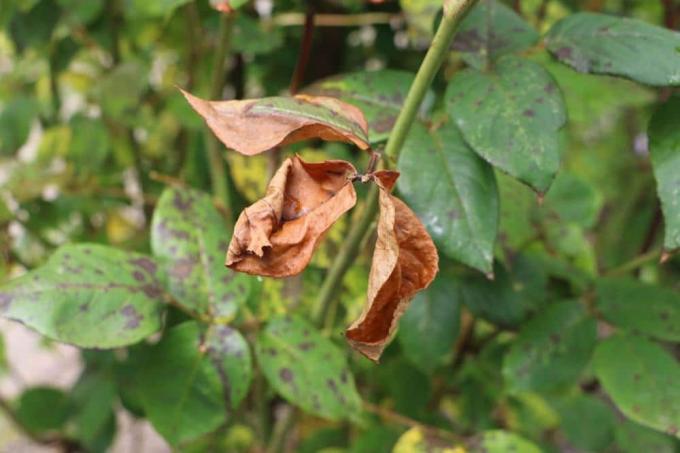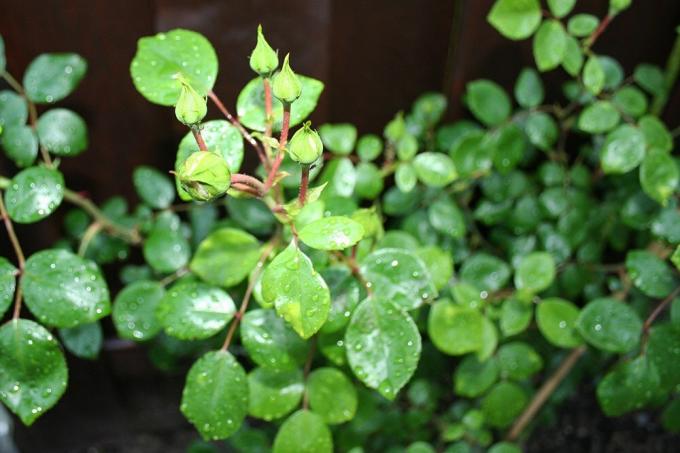
table of contents
- Problem planting time
- Best time to plant
- spring
- summer
- autumn
- consider the following
- Best time to transplant
Roses (botanically: pink) are classics among garden plants. They will be available for purchase in stores as early as spring. In many places there are problems with tackling after planting. This may be due to the planting time, if it was chosen incorrectly. Hobby gardeners should know when to plant their specimens so that these rose plants can thrive and enchant beds with countless, intense colors.
Problem planting time
Like most other plant species, a rose in new soil must first be able to supply itself with nutrients and moisture so that the roots can grow and establish themselves in the soil. For this, the earth must meet certain requirements, which are primarily dependent on the weather / season, but also on the vegetation rhythm of the roses. If the wrong time or a less than optimal time is chosen, this makes it more difficult for the roses, which are already weakened by the potting or repotting, to grow. As a result, growth disturbances, drying up and / or stunting can quickly be noticed on the above-ground parts of the plant. In many cases, they never come on and die before a flower can form.
Best time to plant
spring
The growing season begins for the rose. As soon as the temperatures go higher, the days get longer and the sun provides more warmth, it wakes up from the hibernation. It drives the energy up from the roots and ensures a new shoot and flower formation. If you buy roses now, you can plant them, but it is not recommended for two reasons:
No "fresh"
As a rule, the goods sold in spring are “older” specimens from the last or even the year before last, because young plants are not available until spring at the earliest start growing slowly and usually take a few weeks until they are robust and strong enough to be replanted or replanted will. Then spring would be practically over. "Older" rose offers can have the following disadvantages:
- Increased risk of disease
- Go worse and often not at all
- Any germs / pathogens can migrate to neighboring plants and infect entire beds
- Meager growth
- Reduced bloom formation

Tip: You can plant in spring, but if you want to be on the safe side, you can wait or do it the previous year.
summer
The summer months between June and August are not particularly suitable for planting. The heat stresses the rose plants. This, in combination with the stress from the planting, reduces the chances of the roots settling quickly. They also need a lot of water to tackle, which in summer is usually not naturally available due to rain. Hobby gardeners who do not shy away from the effort of watering their daily needs are in demand here. Once forgetting to water, in the worst case scenario, it could be Rosa’s death sentence. Therefore: do not plant in summer, unless there are the following exceptions!

Tip: Bare-root rose varieties in particular react quickly with plant damage if they do not receive enough water. Since no / hardly any water storage is possible through soil, they very often dry up in summer, which is why these specimens in particular should not be planted in summer.
Exceptions: container and climbing roses
If it is well-rooted container and / or climbing roses, these can definitely be planted in summer. The root system is then consolidated and developed to such an extent that heat stress and planting can be better coped with. But hobby gardeners cannot avoid additional regular watering. The soil must be continuously slightly damp so that the roots can move / spread in it. Those who do not have the time or do not want to find the time should not plant container and climbing roses in summer.

autumn
Autumn is the best time to plant roses. When the days get significantly shorter at the end of September / beginning of October and it gets cooler, the last flowers wither and they shed their leaves. Now the gathering of energy and nutrients begins before they go into hibernation.
If the pink is planted in autumn, the roots can grow thanks to the "saved" energy and Nutrients for the foliage and the flowers recover much faster and more intensively, as well as in the soil anchor. Due to its winter hardiness and the hibernation, it reduces its supply to a minimum, so that in the following In spring there is still enough energy and nutrients available for vigorous growth and lush flowering Has. Therefore, autumn is the ideal time to plant roses.
consider the following
No matter whether you decide to plant in spring or autumn. Basically, the following should be observed at the time of planting:

- Plant before or after prolonged frost
- Do not plant in frozen ground
- Temperatures should be well above freezing point
- In mild winters without frost, planting can be carried out until the end of December / beginning of January
- In the event of sudden / unexpected frost after planting, provide protection from the cold (cover the earth with straw, leaves or pine needles, for example)
- Plant bare-rooted roses no later than October / November so that there is enough time to root before the onset of frost
- Recommended end of planting time: April
Best time to transplant
If roses are to change their location in the garden, this is also all year round during a frost-free period Weather possible, but also here the months between October and December offer the best planting time.
